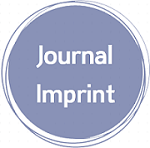Serum Soluble Transferrin Receptor and Transferrin Levels among Regular Blood Donors
Abstract
Doi: 10.28991/SciMedJ-2022-04-03-01
Full Text: PDF
Keywords
References
Chang, D., & Torgalkar, F. S. (2013). What Are the Indications for a Blood Transfusion?. The Hospitalist, Society of Hospital Medicine, 2013(9), 1-3.
Drew, V. J., Barro, L., Seghatchian, J., & Burnouf, T. (2017). Towards pathogen inactivation of red blood cells and whole blood targeting viral DNA/RNA: Design, technologies, and future prospects for developing countries. Blood Transfusion, 15(6), 512–521. doi:10.2450/2017.0344-16.
WHO. (2021). Global status report on blood safety and availability 2021. World Health Organization (WHO), Geneva, Switzerland. Available online: https://www.who.int/publications/i/item/9789240051683 (accessed on April 2022).
Kiss, J. E., Birch, R. J., Steele, W. R., Wright, D. J., & Cable, R. G. (2017). Quantification of body iron and iron absorption in the REDS-II Donor Iron Status Evaluation (RISE) study. Transfusion, 57(7), 1656–1664. doi:10.1111/trf.14133.
Reddy K, V., Shastry, S., Raturi, M., & Baliga B, P. (2020). Impact of Regular Whole-Blood Donation on Body Iron Stores. Transfusion Medicine and Hemotherapy, 47(1), 75–79. doi:10.1159/000499768.
Paton, M. C., Wall, D. A., Elwood, N., Chiang, K. Y., Cowie, G., Novak, I., & Finch-Edmondson, M. (2022). Safety of allogeneic umbilical cord blood infusions for the treatment of neurological conditions: a systematic review of clinical studies. Cytotherapy, 24(1), 2-9. doi:10.1016/j.jcyt.2021.07.001.
Sharma, V. (2017). The strengths and weaknesses of blood services in Kumasi, Ghana. Ph.D. Thesis, University of Liverpool, Liverpool, United Kingdom.
Adu, P., Bennin, D., Edzie, R. A., Owusu-Poku, A. G., Hakeem, T. U., Baba, G. O., & Edzie, E. K. M. (2020). Depleted iron stores in voluntary blood donors: A three-center cross-sectional study in Ghana. Asian Journal of Transfusion Science, 14(2), 149–157. doi:10.4103/ajts.AJTS_112_18.
Dignass, A., Farrag, K., & Stein, J. (2018). Limitations of Serum Ferritin in Diagnosing Iron Deficiency in Inflammatory Conditions. International Journal of Chronic Diseases, 2018, 1–11. doi:10.1155/2018/9394060.
Ghana Statistical Service. (2021). General Report Volume 3N. Ghana 2021 Population and Housing Census, Accra, Ghana. Available online: https://census2021.statsghana.gov.gh (accessed on April 2022).
Tandoh, M. A., Appiah, A. O., & Edusei, A. K. (2021). Prevalence of Anaemia and under nutrition of Adolescent Females in Selected Schools in Ghana. Journal of Nutrition and Metabolism, 2021, 1–5. doi:10.1155/2021/6684839.
Wang, H.-H., Liao, L.-N., Chang, C.-W., Chang, Y.-C., Wu, K.-H., & Ko, J.-L. (2019). The alteration of ferritin and transferrin saturation under body mass index and blood pressure in first-time and regular male blood donors in Taiwan. Medicine, 98(22), e15854. doi:10.1097/md.0000000000015854.
Nkansah, C., Serwaa, D., Osei-Boakye, F., & Owusu-Ampomah, R. (2020). Seroprevalence and trend of hepatitides among blood donors in a district hospital in Ghana: a nine-year retrospective, descriptive cross-sectional study. Journal of Immunoassay and Immunochemistry, 41(1), 71–83. doi:10.1080/15321819.2019.1682601.
Mohammed, S., & Essel, H. B. (2018). Motivational factors for blood donation, potential barriers, and knowledge about blood donation in first-time and repeat blood donors. BMC Haematology, 18(1). doi:10.1186/s12878-018-0130-3.
Okoroiwu, H. U., & Asemota, E. A. (2019). Blood donors deferral prevalence and causes in a tertiary health care hospital, southern Nigeria. BMC Health Services Research, 19(1). doi:10.1186/s12913-019-4352-2.
Cançado, R. D., Chiattone, C. S., Alonso, F. F., Langhi Júnior, D. M., & Alves, R. C. (2001). Iron deficiency in blood donors. São Paulo Medical Journal = Revista Paulista de Medicina, 119(4), 132–4. doi:10.1590/s1516-31802001000400003.
Asamoah-Akuoko, L., Ullum, H., Appiah, B., Hassall, O. W., Ndanu, T., Adongo, P., & Bates, I. (2021). Determinants of intention to return to donate blood among first-time blood donors in Ghana. Vox Sanguinis, 116(3), 324–335. doi:10.1111/vox.13026.
Djalali, M., Neyestani, T. R., Bateni, J., & Siassi, F. (2006). The Effect of Repeated Blood Donations on the Iron Status of Iranian Blood Donors Attending the Iranian Blood Transfusion Organization. International Journal for Vitamin and Nutrition Research, 76(3), 132–137. doi:10.1024/0300-9831.76.3.132.
Jeremiah, Z. A., & Koate, B. B. (2010). Anaemia, iron deficiency and iron deficiency anaemia among blood donors in Port Harcourt, Nigeria. Blood Transfusion, 8(2), 113–117. doi:10.2450/2009.0113-09.
Jain, A., Chowdhury, N., Jain, S., Uttam, N., & Meinia, S. K. (2018). Altered Red Cell Indices in Repeat Blood Donors: Experience of a North Indian Blood Bank. Indian Journal of Haematology and Blood Transfusion, 34(4), 666–670. doi:10.1007/s12288-018-0954-9.
Mahida, V. I., Bhatti, A., & Gupte, S. C. (2008). Iron Status of Regular Voluntary Blood Donors. Asian Journal of Transfusion Science, 2(1), 9. doi:10.4103/0973-6247.39504.
Flesland, O., Eskelund, A. K., Flesland, A. B., Falch, D., Solheim, B. G., & Seghatchian, J. (2004). Transferrin receptor in serum. A new tool in the diagnosis and prevention of iron deficiency in blood donors. Transfusion and Apheresis Science, 31(1), 11–16. doi:10.1016/j.transci.2004.01.011.
Sultana, G. S., Haque, S. A., Ayatunnesa, -, Muttalib, M. M., & Rahman, M. Q. (2018). Red Cell Distribution Width (RDW) and Hb% in the Detection of Iron Deficiency Anaemia in Pregnant Women. Anwer Khan Modern Medical College Journal, 9(2), 137–141. doi:10.3329/akmmcj.v9i2.39210.
Benedict, N., Augustina, A. O., & Nosakhare, B. G. (2012). Blood Donation in Nigeria: Standard of the Donated Blood. Journal of Laboratory Physicians, 4(02), 094–097. doi:10.4103/0974-2727.105589.
Adediran, A., Uche, E., Adeyemo, T. A., Akinbami, A. A., & Akanmu, A. S. (2013). Iron stores in regular blood donors in Lagos, Nigeria. Journal of Blood Medicine, 75. https://doi.org/10.2147/jbm.s42210.
Eisenstein, R. S., & Ross, K. L. (2003). Novel Roles for Iron Regulatory Proteins in the Adaptive Response to Iron Deficiency. The Journal of Nutrition, 133(5), 1510S-1516S. doi:10.1093/jn/133.5.1510s.
Chioma, O. D., Efiom, O. E., Usanga Esien Achibong, U. E., Emeribe Anthony Uchenna, E. A., & Ogbonna, E. A. (2018). Correlation Between Soluble Transferrin Receptor Versus Hemoglobin Concentration, Transferrin Saturation and Serum Ferritin Levels Following Repeated Blood Donations in Nigeria. Asian Journal of Biological Sciences, 11(1), 9-15.
Namita, N., & Ranjan, D. (2019). A cross-sectional study of association between hemoglobin level and body mass index among adolescent age group. National Journal of Physiology, Pharmacy and Pharmacology, 9(8), 746-750. doi:10.5455/njppp.2019.9.0517720052019.
DOI: 10.28991/SciMedJ-2022-04-03-01
Refbacks
- There are currently no refbacks.
Copyright (c) 2023 Samuel Kwasi Appiah, Simon Bannison Bani, Charles Nkansah, Kofi Mensah, Gabriel Abbam, Felix Osei-Boakye, Samira Daud, Charles Angnataa Derigubah, Christopher Nkrumah, Dorcas Serwaa, Vincent Kawuribi, Deborah Essilfie Nkansah, Benjamin Owusu Opoku, Catherine A. Avero, Yeduah Quansah, Candy A. E. Wilson, Felix Ejike Chukwurah









